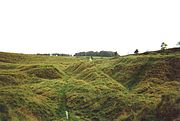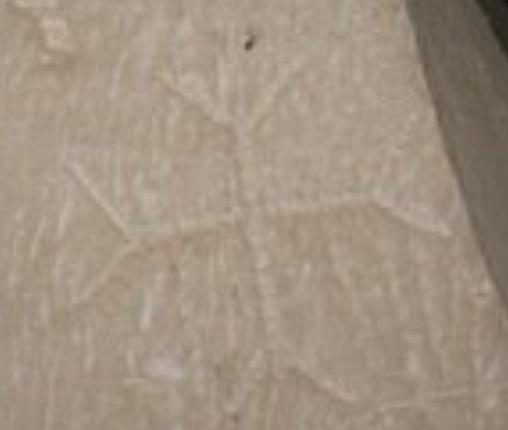|
Contributor
Join Date: Mar 2003
Location: London UK
Posts: 16,024
|

And in other news the Romans dug mines and quarries all over the place - what is this gasp shock horror about about a mine in "the Holy Land". Does no one realise how large the water stores under Constantinople are?
http://en.wikipedia.org/wiki/Mining_in_Roman_Britain
And with slaves nd good technology, what is the problem? Where did the Greeks get their marble from?
Quote:
Mining was one of the most prosperous activities in Roman Britain. Britain was rich in resources such as copper, gold, iron, lead, salt, silver, and tin, materials in high demand in the Roman Empire. The abundance of mineral resources in the British Isles was likely one of the reasons for the Roman conquest of Britain. They were able to use advanced technology to find, develop and extract valuable minerals on a scale unequaled until the Middle ages.
[edit] Lead mining
 
Roman lead mines at Charterhouse, Somerset
Lead was essential to the smooth running of the Roman Empire.[1] It was used for piping for aqueducts and plumbing, pewter, and gutters for villas, as well as a source of the silver that occurred in the same mineral deposits.
The largest Roman lead mines were located in or near the Rio Tinto (river) in southern Hispania.[2][3]In Britannia the largest sources were at Mendip, South West England and especially at Charterhouse. In 49 C.E., six years after the invasion and conquest of Britain, the Romans had the lead mines of Mendip and those of North West England and Wales running at full shift. By 70 C.E., Britain had surpassed Hispania as the leading lead-producing province. The Spanish soon lodged a complaint with Emperor Claudius, who in turn put limits on the amount of lead being produced in Britain. However, these limits were ignored and had the opposite effect on British lead production.[4][citation needed]
[edit] Silver extraction
The most important use of lead was the extraction of silver. Lead and silver were often found together, with the silver being encased in the lead ore. The Roman economy was based on silver, as the majority of coins were minted from the precious metal.[5]
The process of extraction, cupellation, was fairly simple. First, the ore was heated until the lead, which contained the silver, separated from the rock. The lead was removed, and heated up to 1100° Celsius using hand bellows. At this point, the silver separated from the lead, and was put into molds which, when cooled, would form ingots that were to be sent all over the Roman Empire for minting.[1]
[edit] Gold mining

Britain's gold mines were located in Wales at Dolaucothi. The Romans discovered the Dolaucothi vein soon after their invasion, and they used hydraulic mining methods to prospect the hillsides before discovering rich veins of gold-bearing quartzite. The remains of the several aqueducts and water tanks above the mine are still visible today. The tanks were used to hold water for hushing during prospecting for veins, and it involved releasing a wave of water to scour the ground and remove overburden, and expose the bedrock. If a vein was found, then it would be attacked using fire-setting, a method which involved building a fire against the rock. When the hot rock was quenched with water, it could be broken up easily, and the barren debris swept away using another wave of water. The technique produced numerous opencasts which are still visible in the hills above Pumsaint today. A fort, settlement and bath-house were set up nearby in the Cothi Valley. The methods were probably used elsewhere for lead and tin mining, and indeed, were used widely before explosives made them redundant. Hydraulic mining is however, still used for the extraction of alluvial tin.
|
|


